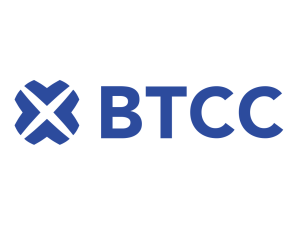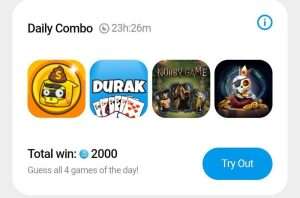A Brief Glance at Wrapped Tokens
Wrapped tokens allow trading, lending and borrowing of unsupported assets such as bitcoin and ethereum on the DeFi platform.
Trying to trade bitcoin on the Ethereum blockchain is a bit like trying to get a PC game to run on a Mac – it won’t work unless you install special software. Thankfully, on blockchains, this process is fairly simple, thanks to something called a wrapped token. But what exactly is a wrapped token, and how does it work?
Put simply, a wrapped token is a token that represents a cryptocurrency from another blockchain or token standard and is worth the same as the original cryptocurrency. Unlike the original cryptocurrency, the wrapped token can be used on certain non-native blockchains and later redeemed for the original cryptocurrency.
One of the biggest benefits of wrapped tokens is they create greater interoperability between non-compatible cryptocurrencies and blockchains – opening the door for things like bitcoin lending or borrowing ether on DeFi platforms. This provides greater liquidity to decentralized services and boosts the utility of crypto assets.
Wrapped Bitcoin (wBTC)
The most popular wrapped token is called wrapped bitcoin (wBTC) – an ERC-20 version of bitcoin.
As of Feb. 1, 2022, the token has a market capitalization of over $10 billion and is secured by crypto custodian BitGo. Wrapped bitcoin dominates 81% of the market for wrapped tokens; the next largest token, renBTC, has a market capitalization of $672 million. WBTC was created by BitGo, Kyber and Ren in 2019.
Wrapped bitcoin is useful because it allows bitcoin investors to plug their asset – or, technically, a synthetic asset that offers the same exposure to bitcoin’s price – into decentralized finance (DeFi) protocols on Ethereum. This unlocks the potential to turn bitcoin into a yield-bearing asset, one that can earn returns from something like liquidity pools on Uniswap or Yearn Finance, for example.
To acquire wrapped bitcoin, you can wrap your own BTC by finding a wBTC merchant such as DeversiFi, Kyber or Ren. The merchant sends your bitcoin to a custodian who mints newly wrapped bitcoin at a 1:1 ratio and stores your deposited bitcoin. When you want to redeem your wBTC for bitcoin, the merchant will send a burn request to the custodian who will then destroy the wBTC and return your bitcoin back to you.
This system of minting and burning wBTC ensures there is always exactly one bitcoin backing every single wBTC in circulation. This is fundamentally similar to how pegged-value stablecoins work.
Alternatively, you can buy wBTC for other cryptocurrencies on centralized or decentralized exchanges.
WBTC isn’t a perfect solution, since it introduces a degree of centralization into the mix. If you hold wrapped bitcoin, you’re entrusting BitGo with your money.
Wrapped Ethereum (wETH)
Wrapped bitcoin isn’t the only useful wrapped token. Another prominent wrapped token is wrapped ether (wETH) launched by 0x labs in 2017.
Unlike wBTC, whose sole purpose is to port bitcoin onto non-native blockchains (currently it supports Ethereum and Tron), one of the main purposes of wETH is to trade synthetic ether right on the Ethereum blockchain.
That’s because wETH converts ether (ETH) into an ERC-20 token – a tradable version of ETH that’s compliant with decentralized finance protocols. ETH, the native token of Ethereum, doesn’t conform to the ERC-20 standard.
You can think of token standards as a set of rules a token must follow to ensure it is compatible with other Ethereum-based services and platforms. Different token standards are used to create different subsets of assets that are compatible with particular services, such as non-fungible tokens (NFTs) or fungible tokens.
Wrapped ETH opens up a whole new world of decentralized finance for ETH holders. With wETH, they can trade directly with other Ethereum-based altcoins and pledge funds to DeFi protocols.
Unlike wBTC, you don’t actually “wrap” ETH at all. To acquire it, you simply trade ETH for wETH through a smart contract, or on a digital wallet like MetaMask. The team behind wrapped ether hopes that the token will eventually be phased out once Ethereum’s code base is updated to make ether conform with the ERC-20 token standard, or if the ERC-20 standard gets overhauled.
The Important Role of Bridges
Products like wBTC aren’t the only way to port assets to different blockchains. Bridges to Polygon, Arbitrum and Optimism let you port assets from Ethereum and trade on those networks at lower costs and quicker speeds. For instance, Osmosis’s Gravity Bridge lets you trade ERC-20 tokens on its Cosmos-based decentralized exchange, and Tezos’s Wrap Protocol Bridge lets you port assets to and from Ethereum.
Huge bridges, like the Wormhole bridge, support many different blockchains. Wormhole, for example, supports Ethereum, Solana, Terra, Binance Smart Chain and Polygon. The bridge also supports NFTs, meaning that you could port a Solana NFT onto Ethereum. On Feb. 2, 2022, however, the Wormhole bridge was exploited for 120,000 wETH (worth over $326 million at the time) highlighting a serious flaw in the technology.
Niche wrappers, like Emblem Vault, create wrappers for entire cryptocurrency wallets; traders have used the protocol to turn old Bitcoin NFTs, minted on Counterparty as early as 2014, into Ethereum-based NFTs. Ronin Bridge is a purpose-built bridge for the Axie Infinity NFT game.
Combined, Ethereum bridges hold $23.24 billion in assets, according to a dashboard on Dune Analytics. Polygon, Avalanche and Fantom dominate the market, holding sway over 23%, 22% and 18% of the market, respectively. About 25% of the assets in the bridges, or about $6 billion, are held in wETH, with a further 22%, or $5.2 billion, being held in the U.S. dollar stablecoin, USDC.
Bridges may soon conquer the DeFi market; it’s easier to trade wrapped tokens in one place rather than wrapped individual cryptocurrencies. But perhaps the future of DeFi will make trading tokens across the blockchain so seamless that you won’t even realize you’re using bridges or wrapped tokens. We’ll see what happens.










